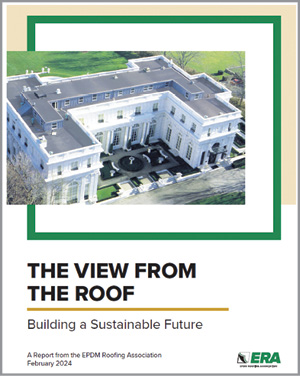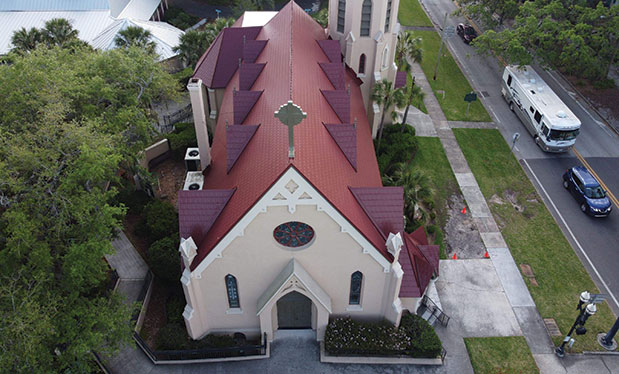ERA publishes sustainable roof system guide
 |
The EPDM Roofing Association has published “The View From the Roof: Building a Sustainable Future,” a guide to incorporating EPDM into sustainable roof systems.
Designed to help solve contemporary issues and preserve the built environment, the report includes an overview of the growing commitment to sustainable building from government agencies, professional associations and academic institutions. It includes detailed instructions for using an EPDM membrane as the foundation of a sustainable roof system, as well as information about the value EPDM brings to a solar roof system.
Additionally, the report includes research results that bring into question long-held assumptions about the role of roof albedo on urban heat islands and energy efficiency.
SPRI offers paper on construction-generated moisture
SPRI has released a new document, “Construction-generated Moisture and its Effect on Roof Systems,” addressing construction-generated moisture and its effect on commercial roof systems.
Construction-generated moisture comes from a variety of activities, including pouring concrete, burning propane heaters, painting, plastering and drywall finishing. These and other activities can contribute to excessive levels of relative humidity inside a structure when proper remediation measures are not taken. The result can be the accumulation of condensation within the roof assembly and within the structure when the temperature is at or below the dew point.
Among the list of specific SPRI recommendations are avoiding the use of wet materials or materials with excessive moisture, installing vapor retarders in the roof assembly, avoiding penetrating vapor barriers, installing at least two layers of insulation and always sealing deck-to-wall joints and gaps around roof penetrations.
The paper, written by Chadwick Collins, SPRI’s technical director, is available at spri.org.
Reverse mentoring can help when implementing AI
 |
The British Standards Institution’s recent Trust in AI Poll, a global survey with more than 10,000 respondents across nine countries, shows 45% of people working in the built environment sector globally say their jobs currently use artificial intelligence. Of those who do not currently use AI, 42% expect to by 2030 and 68% expect the sector overall will, according to Construction Dive.
Designers and contractors are using AI and machine learning to manage data involved with building design, plan construction projects and manage day-to-day operations on job sites. However, this new technology requires learning and development for workers in the construction industry.
Younger generations of workers may be graduating with some knowledge of AI, but few of those workers are entering the construction industry. This means upskilling and reskilling existing workers is crucial.
Although traditional training methods remain useful, Rahul Shah, global director at the British Standards Institution, says implementing reverse mentoring also could help. Younger workers may lack construction knowledge and experience, but their familiarity with AI tools can be helpful to upskill experienced construction workers. As younger employees help train senior leaders regarding AI and technology, they can absorb their experienced co-workers’ knowledge about the industry. In addition to various generations imparting knowledge, reverse mentorship also establishes team trust and collaboration in an age-diverse workforce.
Education is vital for ensuring the construction workforce can successfully integrate AI tools in daily processes. Effective uses of AI can be a positive change for the construction industry, as well as build relationships across the workforce as workers share their knowledge and skills with others.



